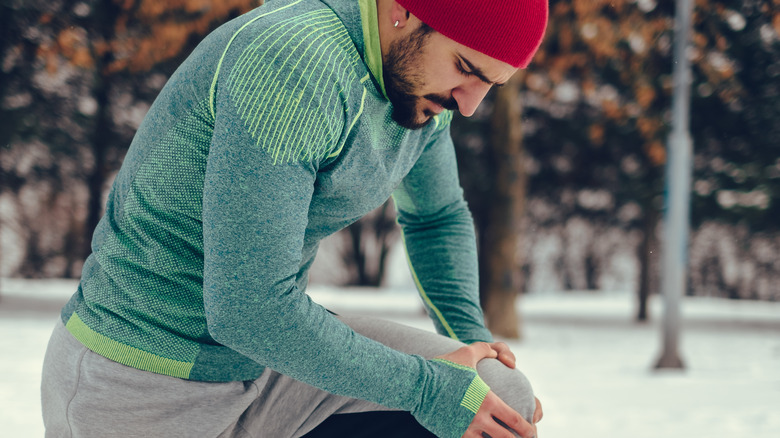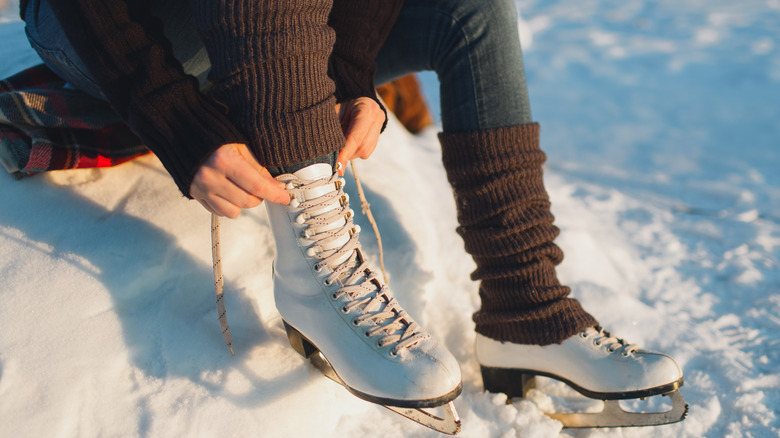Why Does Cold Weather Make Your Knees Hurt?
As the temperature falls during the colder months of the year, the weather can affect our bodies in strange ways. For some, this includes the aggravation of knee pain, according to WebMD. While there is some debate regarding the influence of weather on our joints, the kind of knee pain we're talking about goes beyond the shivering and rattling of our kneecaps come wintertime.
One of the most common explanations offered for cold weather-related knee pain is the drop in barometric pressure (per Central Orthopedic Group). This steep decrease in barometric pressure that occurs as cold weather approaches reduces the amount of air pressure on the body. This can cause the joints in the knees to swell, which subsequently creates pressure on the surrounding nerves, leading to pain sensations. Additionally, the synovial fluid responsible for keeping our knee joints lubricated starts to thicken during cold weather. This thickening obstructs the flow of fluid between the knee joints, causing stiffness and discomfort.
How to reduce knee pain on chilly days
Certain circumstantial factors may also contribute to cold weather knee pain. According to WebMD, our outdoor physical activity may slow during colder seasons, which can enable stiffness and pain in the knees. Understandably so, seeing as going for a jog tends to sound a little less fun on a snowy, windy day. Darker, colder weather can also negatively impact our mood, which can further exacerbate feelings of pain.
Experts at Central Orthopedic Group state that those with certain kinds of knee injuries may be particularly susceptible to knee pain on cold days. Specifically, those with trauma-related knee injuries, patellar tendonitis (also known as jumper's knee), or runner's knee — as the nerves in the knees become more sensitive in colder temperatures.
The next time a chilly day rolls around, experts at WebMD suggest those who experience knee pain take measures to keep themselves warm and active. Wearing additional clothing such as leg warmers, tights, and leg wraps can help provide a little extra insulation around the kneecaps. Additionally, soaking in a warm bath can help keep the muscles loose. On top of getting regular exercise and adequate sleep, be sure to consult with your doctor if your knee pain is severe or does not improve.


